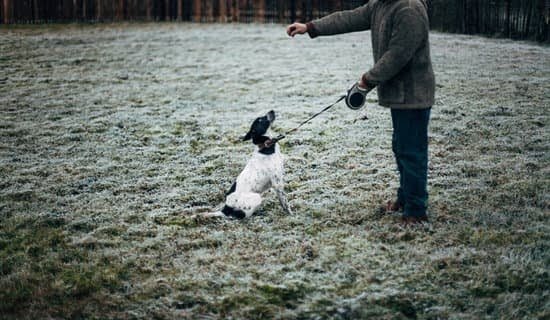Are you tired of your dog constantly begging for food every time you sit down to eat? If so, you’re in the right place. In this article, we’ll discuss how to train your dog not to beg using positive reinforcement and boundary-setting techniques.
Begging is a natural behavior for dogs, as they have evolved to scavenge for food. However, it can quickly become a nuisance in a household, leading to frustration and unwanted behaviors. Understanding the reasons behind your dog’s begging can help in effectively addressing and modifying this behavior.
By setting clear boundaries and being consistent with your training, you can teach your dog to wait patiently during mealtime and refrain from begging. Positive reinforcement techniques, such as rewarding good behavior and ignoring begging, can also play a crucial role in reshaping your dog’s behavior.
Throughout this article, we will explore various training methods, redirection strategies, and mealtime manners that can aid in teaching your dog not to beg. Additionally, we will address potential setbacks and challenges that may arise during the training process. With patience and perseverance, you can successfully train your dog not to beg and enjoy mealtime without any interruptions.
Setting Clear Boundaries
When it comes to training your dog not to beg, setting clear boundaries is crucial. Dogs thrive on structure and consistency, so establishing rules around begging behavior is essential for success. This means that all family members and anyone else who interacts with your dog must be on the same page when it comes to enforcing these boundaries.
One important aspect of setting clear boundaries is ensuring that everyone in the household understands what behaviors are considered as begging. Whether it’s the act of jumping up on people, whining, or staring at food during mealtimes, all these actions should be identified and agreed upon as signs of begging. Consistency in identifying these behaviors will make it easier for everyone to address them accordingly.
Consistency also extends to how you respond to your dog’s begging behavior. If begging is sometimes rewarded with scraps from the table, your dog will continue to exhibit this behavior in hopes of receiving more treats. It’s important for everyone in the household to agree on a uniform response to begging, whether it’s ignoring the behavior completely or redirecting your dog’s attention elsewhere.
| Behavior | Boundary Setting |
|---|---|
| Mouthing or pawing at people | This is seen as an undesirable behavior and should not be encouraged. |
| Whining or barking during mealtime | These actions should be recognized as forms of begging and addressed consistently by everyone. |
| Staring at food or hovering around the table | All members should be aware that this is considered as begging behavior and should not be rewarded. |
Positive Reinforcement
One of the most effective methods in training dogs not to beg is through positive reinforcement. This technique involves rewarding good behavior while ignoring undesirable actions. Whenever your dog displays the desired behavior, such as sitting quietly during mealtime, be sure to offer praise, treats, or toys as a reward. Positive reinforcement helps your canine companion understand what is expected of them and encourages them to repeat the behavior in the future.
It is important to consistently reward your dog for not begging, especially during mealtime. By doing so, you are reinforcing the idea that they will be rewarded for being patient and well-behaved. However, it is equally important to ignore any begging behavior.
This means refraining from giving in to their demands or showing any form of attention when they are exhibiting begging actions. This may be challenging at first, but by remaining consistent, your dog will eventually learn that begging will not result in any form of reward or acknowledgment.
In addition to using positive reinforcement for non-begging behavior, it is crucial to avoid inadvertently reinforcing begging habits. This means refraining from giving your dog food from the table or sharing meals with them while you are eating. By establishing clear boundaries and consistently using positive reinforcement techniques, you can effectively train your dog not to beg and enjoy peaceful mealtimes together.
Redirecting Attention
When training your dog not to beg, it’s essential to provide alternative activities or toys to redirect their attention. This can help shift their focus away from begging and onto something more appropriate.
Interactive toys, such as puzzle feeders or chew toys, can keep your dog occupied and mentally stimulated during meal times. Additionally, engaging your dog in a short play session before meals can also help satisfy their need for attention and prevent them from resorting to begging for food.
One effective method is to use food puzzles or treat-dispensing toys that require problem-solving skills. These interactive toys not only serve as a distraction from begging but also provide mental stimulation for your pet. By keeping your dog mentally and physically engaged, you are addressing the root cause of the begging behavior – boredom or a desire for attention.
It’s important to remember that redirecting your dog’s attention should be done consistently and in conjunction with other training methods. Over time, your pet will learn that exhibiting good behavior results in positive outcomes, such as receiving treats or engaging in stimulating activities. This approach helps in creating a well-rounded training program that addresses the root cause of begging while promoting positive behavior in dogs.
| Training Method | Effectiveness |
|---|---|
| Interactive Toys | Highly Effective |
| Treat-Dispensing Toys | Very Effective |
| Short Play Sessions Before Meals | Moderately Effective |
Mealtime Manners
When it comes to training your dog not to beg, mealtime manners are an essential aspect of their behavior. Teaching your dog to wait patiently during mealtime can help reduce the tendency to beg for food while you and your family are eating. Here are some effective ways to achieve mealtime manners in your dog:
- Establish a designated feeding area: Create a specific spot where your dog eats their meals. This will help them understand that mealtime is only allowed in that particular area, reducing their urge to beg at the dinner table.
- Use the “wait” command: Teach your dog to wait before they approach their food bowl. Start by holding their collar or leash and saying “wait” until you give them the signal to start eating. This will instill patience and self-control during mealtime.
- Practice consistency and routine: Set regular mealtimes for your dog and stick to a consistent schedule. By establishing a routine, your dog will learn when it’s time for them to eat, which can reduce their desire to beg during human mealtimes.
By teaching your dog proper mealtime manners, you can effectively minimize their impulse to beg for food while promoting good behavior during meals. With patience and consistency, you can instill positive habits that will benefit both you and your furry companion.
Training and Commands
Leave It Command
The “leave it” command is essential in teaching your dog to ignore any food or treats that are within their reach. Start by placing a treat on the ground and covering it with your hand. As soon as your dog shows interest in the treat, firmly say “leave it” and wait for them to look away from the treat.
Once they do, reward them with a different treat or praise. Repeat this exercise until your dog consistently ignores the treat when commanded to do so.
Stay Command
The “stay” command is useful during mealtimes to keep your dog from approaching you while you eat. Begin by commanding your dog to sit or lie down, then give the “stay” command before starting your meal. If they try to approach you or beg for food, firmly reinforce the “stay” command and redirect their attention by offering a toy or engaging in a short training session.
Using these commands consistently during mealtime and throughout the day will help reinforce positive behavior and discourage begging. Remember that training takes time and effort, so be patient and consistent in enforcing these commands with your dog.
Consistency Is Key
Training your dog not to beg can be a challenging task, but it is essential to reinforce the training in various situations and with different people. Dogs are known for testing boundaries, so it’s crucial to maintain consistency in your approach to eliminate begging behavior. Whether you’re at home, visiting friends, or dining out at a restaurant, it’s important to uphold the same rules and expectations for your furry friend.
One effective way to maintain consistency is by communicating with family members and visitors about the training process. Informing them about the rules you’ve established for your dog will ensure that everyone is on the same page and reinforces the training in different social settings. Consistency in enforcing these guidelines will prevent confusion for your dog and support their understanding of acceptable behavior no matter who they are with.
Additionally, when addressing begging behavior in various situations, it’s important to remember that persistence is key. Dogs may initially struggle to grasp the concept of not begging, especially when there are tempting smells or food around. However, by consistently reinforcing the training in different environments, your dog will gradually understand what is expected of them. Remembering to stay patient and persistent will ultimately lead to success in curbing begging behavior.
Dealing With Challenges
Identifying Potential Setbacks
While training your dog not to beg, it’s important to anticipate potential challenges that may arise. Some dogs may initially respond well to training but then regress back to begging behavior. Others may resist the training altogether or exhibit stubbornness in breaking the habit. By recognizing these potential setbacks, you can better prepare for them and adjust your training methods accordingly.
Adjusting Training Methods
If you encounter challenges during the training process, it’s essential to be flexible and adaptable in your approach. For instance, if your dog seems unresponsive to positive reinforcement or redirection tactics, consider introducing new strategies. This might involve using different types of rewards, incorporating alternative distractions, or modifying mealtime routines to reinforce patience.
Seeking Professional Assistance
In some cases, addressing begging behavior may require professional guidance from a certified dog trainer or behaviorist. If you find that your efforts are consistently ineffective or if the begging behavior poses a serious challenge, seeking professional assistance can provide valuable insight and customized solutions for your specific situation. Trainers can offer personalized recommendations and techniques tailored to your dog’s individual needs.
By acknowledging potential setbacks and being open to adjusting your training methods as needed, you can effectively overcome challenges and ultimately achieve success in teaching your dog not to beg. Remember that every dog is unique, and what works for one may not work for another. It’s crucial to remain patient, persistent, and willing to adapt throughout the training process for the best possible outcome.
The Importance of Patience and Perseverance
Training a dog not to beg can be a challenging task that requires a significant amount of time and effort. It is crucial for dog owners to understand the importance of patience and perseverance throughout the training process. Here are some key points to consider when working towards this goal:
- Consistency: Consistently reinforcing boundaries and rules is essential in teaching your dog not to beg. This may require repeated correction and redirection, but it is important not to give up.
- Understanding behavior: Recognizing that begging is a natural behavior for dogs can help in approaching the training process with empathy and patience. Dogs may initially struggle to understand the new expectations, so it’s important to remain patient as they learn.
- Rewarding progress: Celebrate small victories and progress, even if it seems minor. Positive reinforcement encourages good behavior, so be sure to reward your dog when they refrain from begging during mealtime or other situations.
It’s also important for dog owners to realize that setbacks are normal in the training process. There may be times when your dog reverts to begging behavior, particularly in new environments or around different people. In such cases, it’s crucial to maintain a patient and consistent approach while addressing these challenges.
Ultimately, understanding that training takes time and effort is key in successfully teaching your dog not to beg. By demonstrating patience and perseverance, you can help your pet develop good mealtime manners and become a well-behaved companion.
Conclusion
In conclusion, training your dog not to beg requires patience, consistency, and positive reinforcement. By setting clear boundaries, using positive reinforcement, redirecting attention, teaching mealtime manners, and utilizing training commands, you can effectively discourage begging behavior in your dog. It is important to remember that consistency is key when reinforcing training in various situations and with different people.
A well-behaved, non-begging dog brings numerous benefits to both the pet and the owner. Not only does it create a more peaceful mealtime environment, but it also strengthens the bond between the owner and the dog. Additionally, a dog that does not beg is more likely to be welcomed in various social settings without causing disruptions or inconvenience.
While it may take time and effort to train your dog not to beg, the end result is well worth it. With dedication and perseverance, you can successfully shape your dog’s behavior and enjoy the company of a polite and well-mannered canine companion for years to come.
Frequently Asked Questions
How Can I Stop My Dog From Begging?
One way to stop your dog from begging is to avoid giving them food from the table, especially when you are eating. It’s important to set clear boundaries and consistently reinforce them. You can also redirect their attention by giving them a toy or a chew bone to keep them occupied during meal times.
What Causes Dogs to Beg?
Dogs beg for food mainly because they have learned that it can be a successful way to get attention or treats from their owners. Additionally, if they have been accidentally rewarded for begging in the past, they will continue to exhibit this behavior as they associate it with getting what they want.
Is Begging a Learned Behavior in Dogs?
Begging is indeed a learned behavior in dogs. If a dog has received food or attention when begging in the past, they will continue this behavior as they have associated it with getting something positive in return. It’s important not to inadvertently reinforce this behavior by giving in to their demands when they beg.

Welcome to the blog! I am a professional dog trainer and have been working with dogs for many years. In this blog, I will be discussing various topics related to dog training, including tips, tricks, and advice. I hope you find this information helpful and informative. Thanks for reading!





